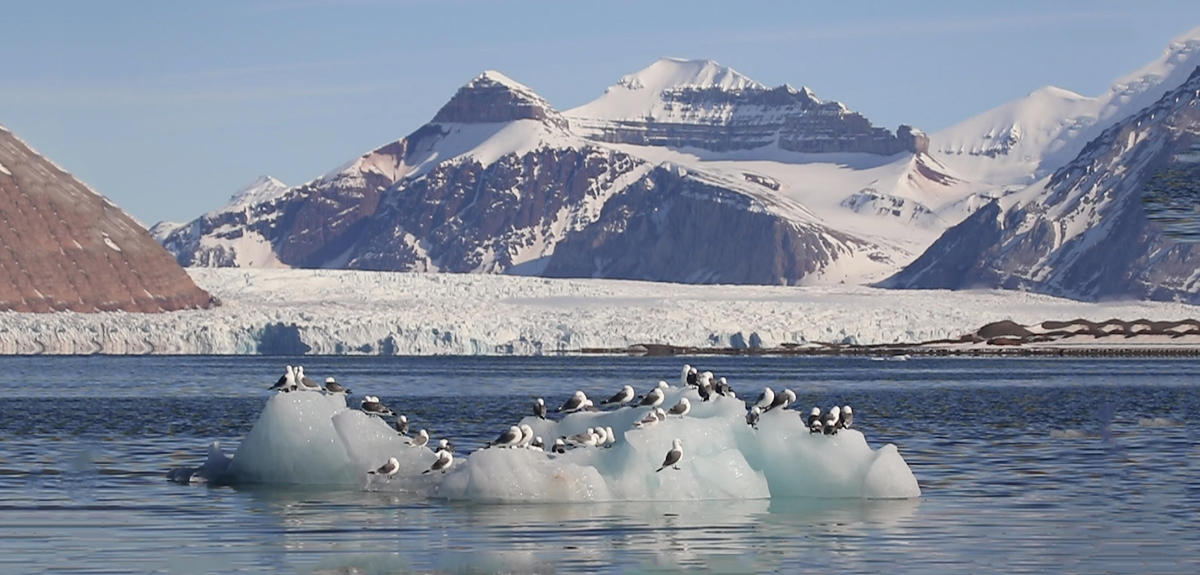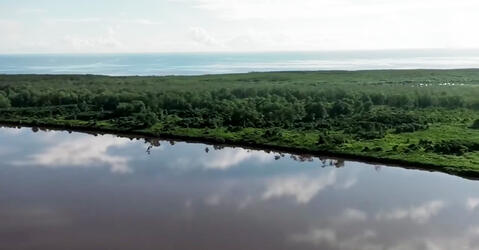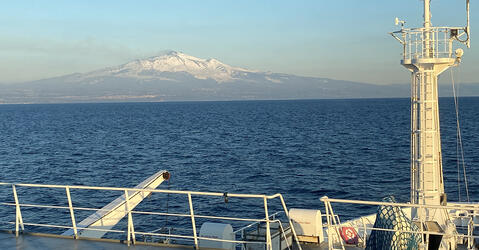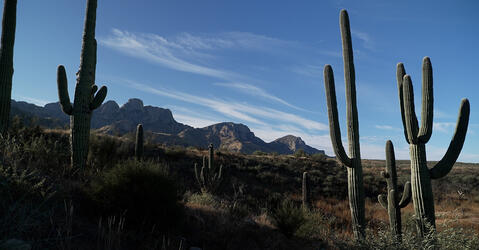Waterproofing - fire-proofing and non-stick coating These technologies bring safety and comfort to our modern civilization, and are based on chemicals called per and polyfluoroalkyl substances or PFAS.
These chemicals are mainly made of carbon hydrogen and fluorine atoms. The PFAS group covers more than 4,700 substances…
.
Nicknamed “forever chemicals”, these molecules are volatile - they can be emitted by the materials they are applied on and get released into the air. They can linger in the environment for decades...
These Forever chemicals can travel vast distances and accumulate in regions very far from their initial site of emission.
They can end up in places… like the polar region. This is where many pollutants, like PFASs, end up after being transported by atmospheric and marine currents.
As sea ice melt, these toxic molecules are released into waterways where they contaminate the food chain and end up in the bodies of marine predators.
And What exactly are the effects of these PFAS on arctic wildlife?
For the past 20 years, a French-Norwegian team of scientists hasve been studying a colony of seabird- black-legged kittiwake - in Svalbard, a scattering of small islands near the polar circle. They are trying to understand the effects of pollutants on these birds’ reproduction.
Olivier Chastel biologist
« The kittiwake is in a top position within the food chain because it feeds on fish. So these birds accumulate contaminants over time. And they can live for over 20 years.”
During its lifetime, the bird accumulates pollutants in its organism, making it a good indicator of the ecosystem’s contamination.
The research team sets up a camp every year near the birds it wishes to study. The scientists want to know the level of contamination of these birds.
And so at the beginning of the breeding season, they collect blood samples that will enable them to measure the different pollutants in their organisms. Legacy or historic’ pollutants, like the widely used pesticide DDT as well as molecules of growing concern like PFAS.
By monitoring the contents of the nests using a mirror attached to a fishing rod, the scientists noticed that the most PFAS-contaminated birds showed the lowest level of hatchings, compared to the less contaminated birds.
Does this have anything to do with an adverse effect on male fertility?
In order to test this hypothesis, the scientists gather sperm samples that they can observe with a microscope. They measure the sperm’s vitality, and morphology. The researchers believe that there may be a link between sperm quality and PFAS contamination.
50 birds were studied during this experiment.
Olivier Chastel (CEBC)
First, we noted that more than 70 percent of the sperm cells had abnormal shapes - specifically their heads were atypical. So we demonstrated a correlation between this abnormality and PFAS pollution. This means the birds that were the most contaminated also had abnormal sperm cells.
Going beyond the demonstration of the visible consequences on fertility, the scientists wish to understand the biochemical processes that could explain the anomalous sperm cells they observed. Several lines of inquiry are being explored, such as hormonal mechanisms.
Olivier Chastel (au laboratoire)
“Why hormones? Because testosterone, the male hormone, plays a key role in sperm cell production. So we are trying to see if the birds that are the most contaminated also have atypical levels of testosterone because PFAS are known hormonal disruptors.
The same blood sample used to measure pollutant levels are used to measure testosterone levels As well.
Charline Parenteau (au laboratoire)
Biochimiste
“So here I’m measuring the amount of testosterone found in the birds’ blood. First I extract the hormone from the blood using this machine you can see here - it automates the process of extracting the hormones.”
After extraction, the hormone levels will be known for every individual.
The study of the effects of PFAS on the hormonal system continues at the Centre for Biological studies in the centre of France ; other biochemical analyses are being carried out here as well - to help understand what is happening to these birds’ fertility.
As new molecules are constantly introduced onto the market, studies that establish their effects and toxicity are of utmost importance.
Olivier Chastel (au laboratoire)
“Out of the thousands of PFAS that are used, there are only two that are regulated so far. So it’s very important to know about the potential toxicity of these molecules”
This scientific monitoring can occasionally lead to molecules being banned. And The history of regulation can be read in the blood of arctic birds...
Olivier Chastel (Terrain)
«We managed to show that levels of banned legacy contaminants are progressively declining in the environment and the blood of these birds…”
The case of DDT, a chlorinated pesticide banned in the 1970s shows how persistent these pollutants can be as DDT is still detected in Svalbard islands 50 years after being banned… This case also shows the positive effects of regulation… DDT levels continue to decline in the air and in the blood of wildlife.
Scientific evidence can thus inform policymakers and show the way for better protecting wild animals and their ecosystems…





